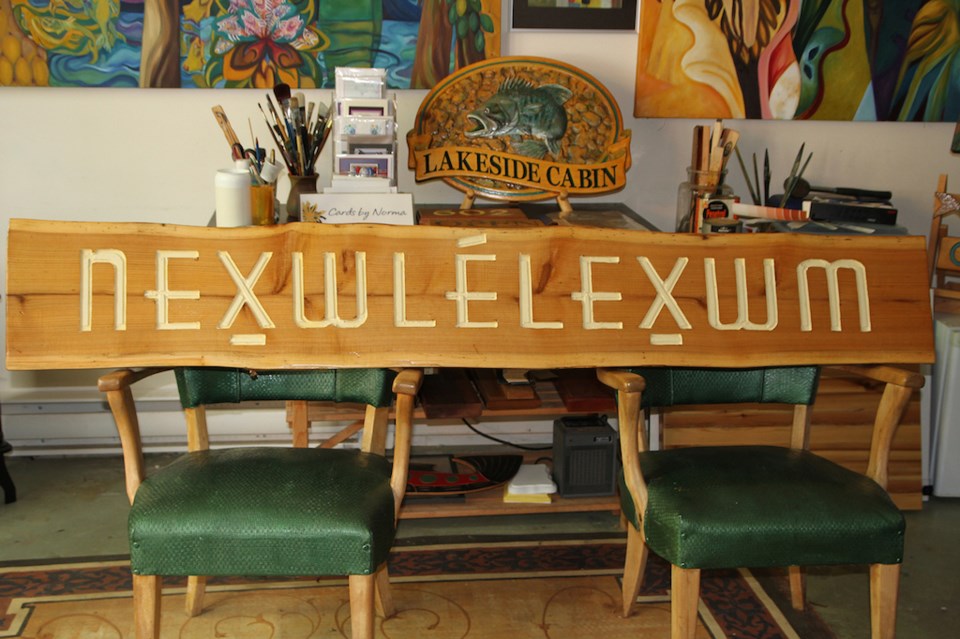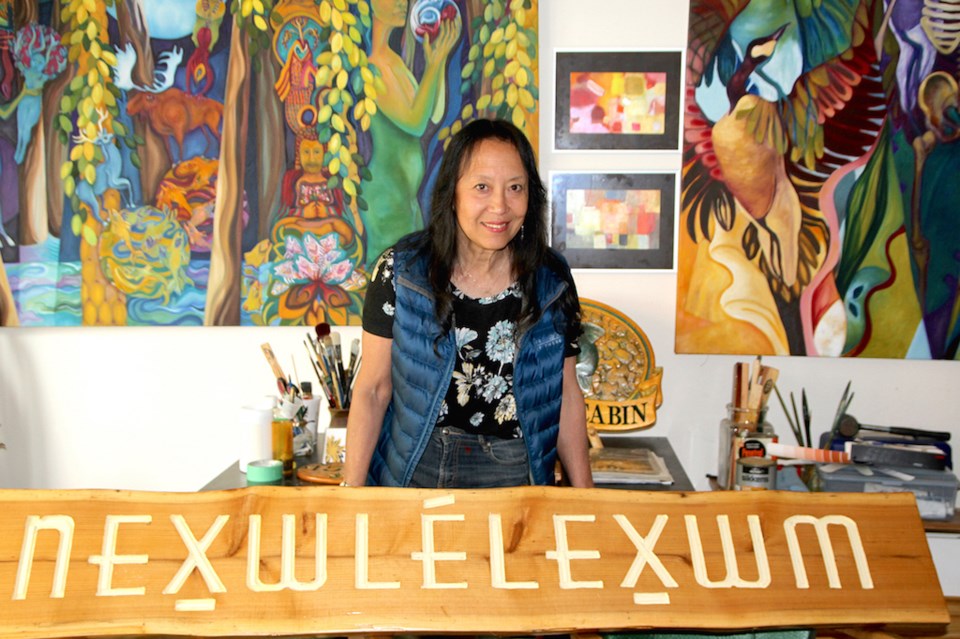For thousands of years, the Squamish People called this island by two names: Kwilàkm and Nexwlélexwm, names passed down through the generations. Only very recently has it carried the name Bowen, after a British soldier who never witnessed the beauty of the forest here, never observed the sun rising from behind the Coast Mountains, never bathed in the warm glow of a sunset reflected in the waters.
To reclaim this important part of our history, we’ve built a new sign. The name Nexwlélexwm (pronounced more or less: Nooch-lay-le-qwam) will greet islanders and visitors as they step off the ferry in Snug Cove. For those who might be concerned, let me reassure you the current Bowen Island sign will remain.
June 21 will mark the historic unveiling of this sign with Bowen’s original name.
Because of the current regulations around social distancing during the coronavirus, we are not able to have a large gathering to celebrate the unveiling. The ceremony will be live streamed so you can stay home and be part of it. You will be able to find a link at bowenlibrary.ca and at thehearth.ca to view the live stream video.
How we name something––a person, a place, an object––says as much about the namer as the named. This historic naming speaks to the island’s desire to acknowledge the presence of the Squamish People, an important gesture of reconciliation honouring the care they have taken of the land and waters here. When we say Nexwlélexwm, we place ourselves in the world that existed before settlers, when the island was canopied in ancient forest, and salmon were so abundant you could walk across the streams on their backs.
The name Nexwlélexwm has been referred to by both Louis Miranda and August Jack Khatslano, 20th century Elders who shared their knowledge of Howe Sound/Atl’ka7tsem with historians. No one is certain about the meaning of the word, which appears in the Squamish/English Dictionary.
The making of the sign took over three years. It began on a Sunday afternoon on Mai Yasue’s front porch––her twice monthly Diversi-Tea––to put forward social justice issues. Because of the work I was doing in reconciliation, all fingers pointed to me to follow up on the Squamish language sign.
Rina Freed of Source Environmental Associates generously offered to contribute to the cost of the sign. There followed correspondence with members of the Squamish Nation, receiving their permission and their blessing, as well consultation with Bowen Island Municipality, which is contributing to the cost and will install and maintain the sign.
Come with me as I step into The Sign Studio at Artisan Square to meet Coral Louie, the maker of the sign. It’s a magical place. The floors are covered by gorgeous original carpets made of oilcloth. There’s a wall of photos of the many signs Coral has made, including Alderwood Farm, Tir-na-nOg and Paradise Grill. And enormous rounds of wood cut from an island Sequoia tree, waiting for an assignment. Coral’s signs are routered or sandblasted.

Coral built the original “Bowen Island Welcomes You” sign, making her the natural choice for this one.
A Norwegian couple – Jeff and Martha – commissioned that sign. They loved the island and wanted to make a contribution.
“John Reid donated the log, cut from his land,” recalls Coral. “John Willis, and his brother Bill, rolled the 25-foot log onto a trailer using peavey poles and rollers and then moved it across the island. John Willis put it through his mill and put it on blocks so I could work on it. He even made a tarp roof so I could work during the rain.”
Coral grew up in Burnaby, lived up north in Peace Rover country, where her children were born. She moved to Bowen in 1984. “Reidun van Kervel and I opened the sign studio at Artisan Square 26 years ago. Before that we worked in Reidun’s house for several years. We had trouble getting in the door!”
“I feel lucky,” Coral tells me, “to have met a lot of people here. I wouldn’t do something like signs anywhere else. It’s a way to keep a studio going and stay creative. A privilege to work with people I know.” The post office pays her bills, she adds. You may have been greeted by Coral’s smiling face at the post office where she works three days a week.
Coral shows me the sign. It’s handsome, sturdy, befitting its name and importance. Made from a Douglas Fir log. A beach log. “I used to work with Peter Dean, a carpenter”, Coral explains. “He would be out in his kayak combing the beaches around the island. When he came across a log on the beach, he’d phone me and ask if I could use it. This log was gathered about ten years ago.”
Squamish Nation Elders will preside over the unveiling and though we’re keeping the gathering small, we are making a video of the ceremony so that everyone may witness the historic event. This will include a language lesson to teach everyone how to pronounce the new name. If you want to get a head start, check out Khelsilem’s video on Youtube: “How To Say Bowen Island in the Squamish Language.”
The unveiling of the sign is part of the Knowing Our Place reconciliation initiative, which I began three years ago with the dedicated support of the Bowen Island Arts Council and the Bowen Library. A grant from Heritage Canada will pay for the celebration and the video. Stay tuned for the showing of the video to launch soon after the event.



